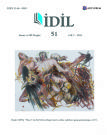MÜTEVAZI NESNELER VE AÇIK ALAN HEYKELLERİ
HUMBLE OBJECTS AND PUBLIC SCULPTURES
Author(s): Canan ZöngürSubject(s): Visual Arts, Sociology of Art, History of Art
Published by: Sanat ve Dil Araştırmaları Enstitüsü
Keywords: Sculpture; Monument; Monumental; Open space; Humble objects;
Summary/Abstract: When the historical process of the art of sculpture is examined, it is seen that the subjects and styles of the first examples have changed according to periods and cultures until the 20th century. But over the centuries unchanging phenomenon is taken as the subject of the human body. Statues in public spaces until the 20th century were made to commemorate certain people, heroes or victories. After the second half of the 20th century, the concept of sculpture in the open area has changed dramatically. Together with the changing and developing social structure, technology development and art movements, the artists turned to different narrative tools. The sculptures in the open space have started to have forms in which they can communicate and contact immediately. Technological developments have allowed artists to approach statues differently from the perspectives of large sizes and various colors and textures. The monuments that were made in the past began to be replaced by monumental sculptures. In this study, the sculptures and interactions of the objects used in daily life, which are included in the art movement called Pop Art, which continue with other art concepts along with sculpture examples, were examined. The sculptures of Cleas Oldenberg are the first examples of this new approach. Later, although artists such as Jeff Koons, Yoyai Kusama, Kemal Tufan and Simon Peryy took part in different views and movements, they were used as metaphors in their sculptures.
Journal: İdil Sanat ve Dil Dergisi
- Issue Year: 7/2018
- Issue No: 51
- Page Range: 1319-1324
- Page Count: 6
- Language: Turkish

